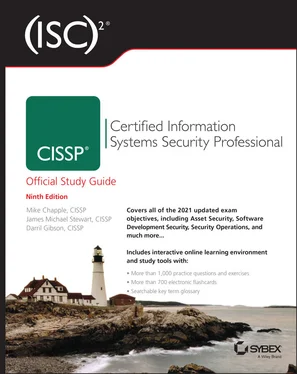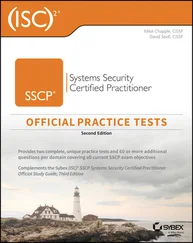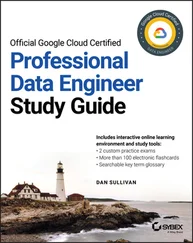In most cases, especially when privacy is being violated or restricted, the individuals and companies may need to be informed; otherwise, you may face legal ramifications. Privacy issues must also be addressed when allowing or restricting personal use of email, retaining email, recording phone conversations, gathering information about surfing or spending habits, and so on. All this and more should be codified in a privacy policy (i.e., internal rules) and potentially a privacy statement/disclosure/notice (i.e., explanation to external entities).
Privacy and PII are covered more in Chapter 4.
Understand and Apply Risk Management Concepts
Risk management is a detailed process of identifying factors that could damage or disclose assets, evaluating those factors in light of asset value and countermeasure cost, and implementing cost-effective solutions for mitigating or reducing risk. The overall process of risk management is used to develop and implement information security strategies that support the mission of the organization. The results of performing risk management for the first time is the skeleton of a security policy. Subsequent risk management events are used to improve and sustain an organization's security infrastructure over time as internal and external conditions change.
The primary goal of risk management is to reduce risk to an acceptable level. What that level actually is depends on the organization, the value of its assets, the size of its budget, and many other factors. One organization might consider something to be an acceptable risk, whereas another organization might consider the very same thing to be an unreasonably high level of risk. It is impossible to design and deploy a totally risk-free environment; however, significant risk reduction is possible, often with modest effort.
Risks to an IT infrastructure are not all computer based. In fact, many risks come from non-IT sources. It is important to consider all possible risks when performing risk evaluation, including accidents, natural disasters, financial threats, civil unrest, pandemics, physical threats, technical exploitations, and social engineering attacks. Failing to properly evaluate and respond to all forms of risk will leave a company vulnerable.
Risk management is composed of two primary elements: risk assessment and risk response.
Risk assessment or risk analysis is the examination of an environment for risks, evaluating each threat event as to its likelihood of occurring and the severity of the damage it would cause if it did occur, and assessing the cost of various countermeasures for each risk. This results in a sorted criticality prioritization of risks. From there, risk response takes over.
Risk response involves evaluating countermeasures, safeguards, and security controls using a cost/benefit analysis; adjusting findings based on other conditions, concerns, priorities, and resources; and providing a proposal of response options in a report to senior management. Based on management decisions and guidance, the selected responses can be implemented into the IT infrastructure and integrated into the security policy documentation.
A concept related to risk management is risk awareness. Risk awareness is the effort to increase the knowledge of risks within an organization. This includes understanding the value of assets, inventorying the existing threats that can harm those assets, and the responses selected and implemented to address the identified risk. Risk awareness helps to inform an organization about the importance of abiding by security policies and the consequences of security failures.
Risk Terminology and Concepts
Risk management employs a vast terminology that must be clearly understood, especially for the CISSP exam. This section defines and discusses all the important risk-related terminology:
Asset An asset is anything used in a business process or task. If an organization relies on a person, place, or thing, whether tangible or intangible, then it is an asset.
Asset Valuation Asset valuation is value assigned to an asset based on a number of factors, including importance to the organization, use in critical process, actual cost, and nonmonetary expenses/costs (such as time, attention, productivity, and research and development). When performing a math-based risk evaluation (i.e., quantitative; see the “Quantitative Risk Analysis” section, later in this chapter), a dollar figure is assigned as the asset value (AV).
Threats Any potential occurrence that may cause an undesirable or unwanted outcome for an organization or for a specific asset is a threat. Threats are any action or inaction that could cause damage, destruction, alteration, loss, or disclosure of assets or that could block access to or prevent maintenance of assets. They can be intentional or accidental. They can originate from inside or outside. You can loosely think of a threat as a weapon that could cause harm to a target.
Threat Agent/Actors Threat agents or threat actors intentionally exploit vulnerabilities. Threat agents are usually people, but they could also be programs, hardware, or systems. Threat agents wield threats in order to cause harm to targets.
Threat Events Threat events are accidental occurrences and intentional exploitations of vulnerabilities. They can also be natural or person-made. Threat events include fire, earthquake, flood, system failure, human error (due to a lack of training or ignorance), and power outage.
Threat Vector A threat vector or attack vector is the path or means by which an attack or attacker can gain access to a target in order to cause harm. Threat vectors can include email, web surfing, external drives, Wi-Fi networks, physical access, mobile devices, cloud, social media, supply chain, removable media, and commercial software.
Vulnerability The weakness in an asset or the absence or the weakness of a safeguard or countermeasure is a vulnerability. In other words, a vulnerability is a flaw, loophole, oversight, error, limitation, frailty, or susceptibility that enables a threat to cause harm.
Exposure Exposure is being susceptible to asset loss because of a threat; there is the possibility that a vulnerability can or will be exploited by a threat agent or event. Exposure doesn't mean that a realized threat (an event that results in loss) is actually occurring, just that there is the potential for harm to occur. The quantitative risk analysis value of exposure factor (EF) is derived from this concept.
Risk Risk is the possibility or likelihood that a threat will exploit a vulnerability to cause harm to an asset and the severity of damage that could result. The more likely it is that a threat event will occur, the greater the risk. The greater the amount of harm that could result if a threat is realized, the greater the risk. Every instance of exposure is a risk. When written as a conceptual formula, risk can be defined as follows:risk = threat * vulnerabilityorrisk = probability of harm * severity of harm
Thus, addressing either the threat or threat agent or the vulnerability directly results in a reduction in risk. This activity is known as risk reduction or risk mitigation, which is the overall goal of risk management.
When a risk is realized, a threat agent , a threat actor , or a threat event has taken advantage of a vulnerability and caused harm to or disclosure of one or more assets. The whole purpose of security is to prevent risks from becoming realized by removing vulnerabilities and blocking threat agents and threat events from jeopardizing assets.
Safeguards A safeguard, security control, protection mechanism, or countermeasure is anything that removes or reduces a vulnerability or protects against one or more specific threats. This concept is also known as a risk response. A safeguard is any action or product that reduces risk through the elimination or lessening of a threat or a vulnerability. Safeguards are the means by which risk is mitigated or resolved. It is important to remember that a safeguard need not involve the purchase of a new product; reconfiguring existing elements and even removing elements from the infrastructure are also valid safeguards or risk responses.
Читать дальше












